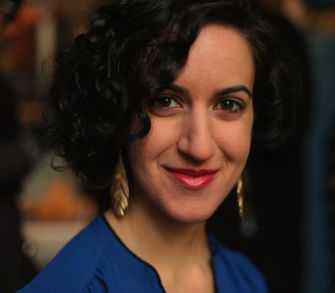‘One Drop of Love’Posted in Articles, Arts, Autobiography, Census/Demographics, History, Literary/Artistic Criticism, Media Archive, United States on 2015-10-02 13:31Z by Steven |
The Sophian: The Independent Newspaper of Smith College
Northampton, Massachusetts
2015-09-24
Eliza Going, Contributing Writer
Fanshen Cox DiGiovanni performed her well-known one-woman play challenging the construct of race, “One Drop of Love,” on Sept. 18 and 19 in the Hallie Flanagan Studio Theatre. In this show, she not only tells the story of her own experiences with race as a multicultural woman, but she also gives a taste of many different incidents experienced by people of varying ages, backgrounds and cultural identities through the ups and downs of their most intimate relationships.
The play is presented in two formats. In one, DiGiovanni plays a variety of different characters talking conversationally about their experience with race; in the other, she jumps through U.S. history as a census taker. A projector lights up a simple white screen with the year and race section of the corresponding census…
Tying the census into the play introduces a political component that connects the stories of racial injustice to a tangible account of the government’s inattention toward racial or cultural identity. Only in 2010 [2000] did it become possible to check more than one box on the census. “I’m glad she connected the personal and the political in this way because, to me, they’re inextricably linked, and one can’t talk about one without the other,” Elizabeth Haas ’17 said…
Read the entire review here.


